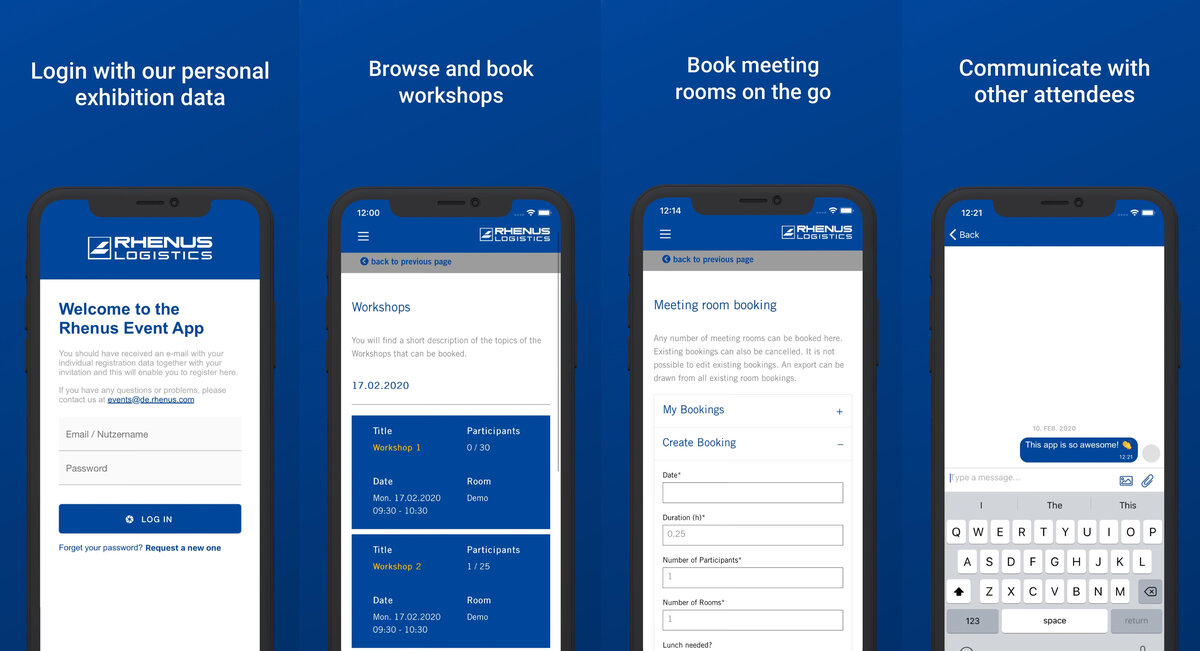
The event organization faced many challenges. As in many companies, the organization of events was done by e-mail and Excel. As an internationally operating company, Rhenus now wanted to change this. After the success of a trial run, this was now to be expanded for future events. It became a new building, more about that later.
In order to organize participants and speakers at an event, many steps had to be taken. The use of invitations, the control of acceptances and cancellations, meeting rooms that participants needed individually, the accommodations that had to be booked as well as the lecture organization so that not too many participants were registered for a workshop or even booked the same workshop twice. This required a large amount of communication effort to attendees, venues and hotels. How this worked by means of e-mail and Excel baffles me on the one hand, although I also have great respect for this achievement.
Rhenus invites an international audience to the events. Participants and speakers come from almost every country in the world. Depending on arrival and departure, hotels had to be booked, information about the event had to be received and many other things had to be taken care of at short notice. For each event, participants had the requirements to be able to communicate centrally with other participants.
The solution was to create a backend for the organization, a frontend on the web and an app where participants could quickly and easily complete all the necessary tasks.
Pimcore plays a central role in this. The backend of Pimcore was built to the requirements using master data management, so that the organization of the events could create events and tracks very easily. Similarly, users could be created and managed.
The frontend on the web was implemented from the beginning so that forms and booking mechanisms could also be directly integrated in the app as a WebView. The chat was integrated exclusively in the app.
Pimcore was again so flexibly extensible here that an API could be implemented for the app. In addition, the Pimcore backend itself was extended to allow the event organization to send PUSH notifications to the app, depending on the event. Hotel bookings could also be exported and thus forwarded to the hotels.
All in all, the event app brought a significant simplification for everyone in many places and is an example of good digitalization. One more reason to present this at Pimcore Inspire 2019 on the Tech Track.
The first version of the app was also implemented in Pimcore. Unfortunately, this was implemented by a partner agency. At that time, the management decided to implement the first version via a partner service provider without involving me as the area manager for Pimcore. As a result, the first version was programmed without any dynamics and concept.
After the success of the first event, they wanted to use this app again for future events. However, this required a complete rebuild. Additional requirements and dependencies arose, which could have been identified beforehand with a good concept.
As soon as the management level hears the word "new construction", it just unfortunately pinches their wallet so much that even the statement "It takes less working time to rebuild it than to rebuild it" falls on deaf ears. Deciding how to proceed now takes weeks, which resulted in me giving this project a little over 80 hours in 7 days including technical concept, backend, API, web front end, UX concept and UI design. I am only proud that I can do it, but not that I did it.